26 FREE Things To Do In Seoul
Last Updated on January 25, 2025
Korea can be a rather expensive place to visit or live but once you know how to have fun for free, it doesn’t have to be. Whether you’re living on a tight budget to pay off those loans back home, or taking a trip to Seoul and blew your cash on the plane ticket, you’ll still have plenty to do for fun in Seoul.
There are a ton of places you can go in Seoul with cool events and exhibitions, awesome parks, and historical buildings that you can walk into for free. Don’t miss out on these budget friendly fun spots in Seoul, Korea.
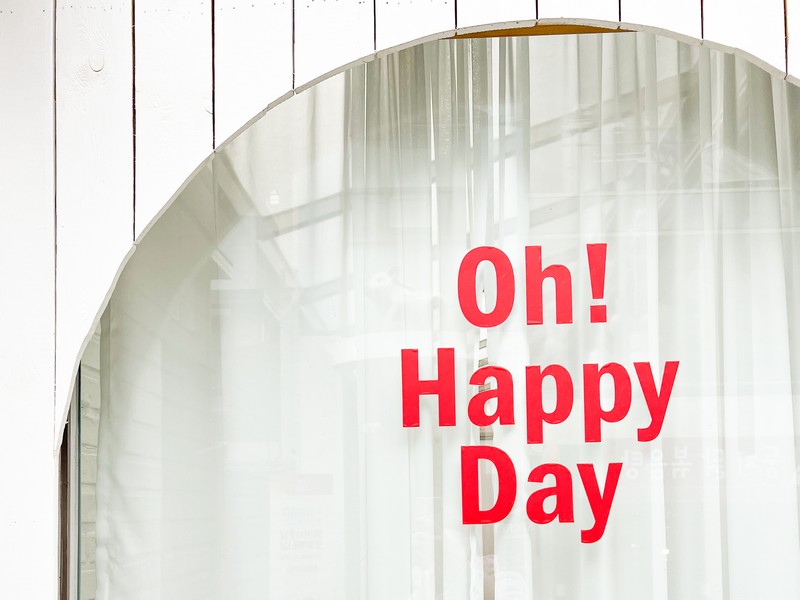
Here is a list of completely free things to do in Seoul:
- Planning a trip to Seoul, here’s where to start…
- Is traveling in Seoul cheap?
- 25 Free Things To Do In Seoul
- Culture Station Seoul 284 (문화역서울284)
- Seoul Museum of Craft Art (서울공예박물관)
- Oil Tank Culture Park (문화비축기지)
- War Memorial Of Korea (전쟁기념관)
- National Museum of Korea (국립중앙박물관)
- National Hangeul Museum (국립한글박물관)
- National Folk Museum of Korea (국립민속박물관)
- Seoul Museum of History (서울역사박물관)
- Seoul Baekje Museum (한성백제박물관)
- Jeongdong Observatory
- Seoul Fortress Wall
- Ihwa Mural Village (이화동벽화마을)
- Seoul Walking Tours
- Cheonggyecheon Stream (청계천)
- Seoullo 7017
- Bukchon Hanok Village (북촌한옥마을)
- Eunpyeong Hanok Village (은평한옥마을)
- Han River Parks (한강공원)
- Rainbow Lights at Banpo Bridge (반포대교 무지개 분수)
- All of the Korean Buddhist Temples
- Dongdaemun Design Plaza (동대문디자인플라자(DDP))
- Seosomun Shrine History Museum (서소문성지역사박물관)
- Seoul City Hall (서울특별시청)
- National Palace Museum of Korea (국립고궁박물관)
- HiKR Ground (하이커 그라운드)
- The Story of King Sejong (세종이야기)
(This post contains affiliate links, which means I receive a certain percentage of a sale if you purchase after clicking at no cost to you. Thank you for your support.)
Planning a trip to Seoul, here’s where to start…
- An epic guide to Seoul for the first timer
- Travel to Korea: Where To Start
- For some more budget friendly tips, check out 13 Ways to Save Money on Travel In Korea too
Is traveling in Seoul cheap?
Well, the answer really depends on you and how you travel. If you plan on clubbing and cafe hopping, you’re likely to spend a pretty penny. Restaurants that cater to foreigners cost more and taxis which are more comfortable add up quickly. If you travel more like a local though, opting for subways and buses and eat local food, you can definitely have a pretty budget-friendly trip to Seoul.
Most major historical or cultural attractions in Korea are either free or cost less than W5,000 to visit. Of course, amusement parks and tickets to K-pop concerts can again be expensive in Korea. It’s all about balance if you ask me. If you want to splurge on something, then visit some of these free places in Seoul to make up for it.
24 Free Things To Do In Seoul
I can’t mention all of the amazing parks in Seoul that are free. I’ve mentioned the Han River Parkside, but except for the Seoul Botanic Park, every other park is free to enter from my knowledge. I’ve tried to mention the museums that are completely free to enter and the main tourist attractions that you don’t have to pay to get into. Let the free fun begin!
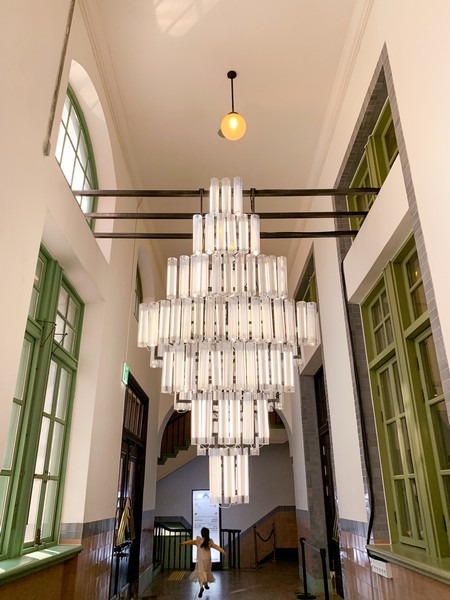
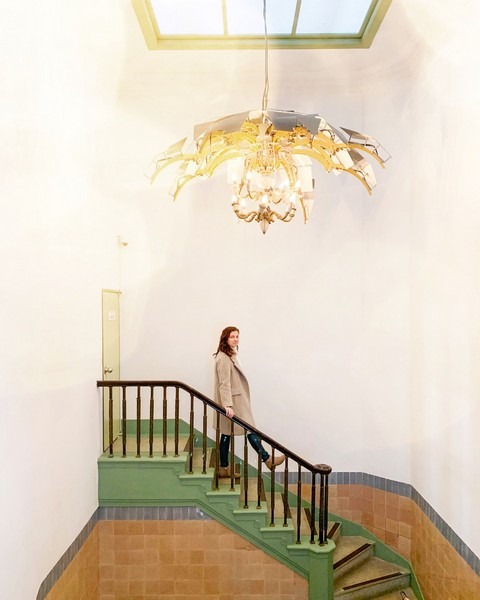
1 Culture Station Seoul 284 (문화역서울284)
The old Seoul Station which sits just outside of the new huge Seoul Station was converted into an arts and culture space and opened to the public after restorations in 2011. Whether you’ve just arrived at Seoul Station, or are headed somewhere for the weekend, you should absolutely plan to stop in the arts and culture space known as Culture Station Seoul 284.
They host FREE exhibitions throughout the year and they do a really good job of curating them. A lot of people walk right by this building and don’t realize the beauty that is held within. You will be able to enjoy an artistic or cultural exhibition while simultaneously taking a tour of the old station that was built in 1925.
- Address: Seoul Station(Headquarter)1, Tongil-ro, Jung-gu, Seoul (서울특별시 중구 봉래동2가 통일로 1)
- Hours: Tuesday – Sunday: 10:00am ~ 7:00pm* (Note it is closed if they are between exhibitions and setting up.)
- Website: Culture Station Seoul 284
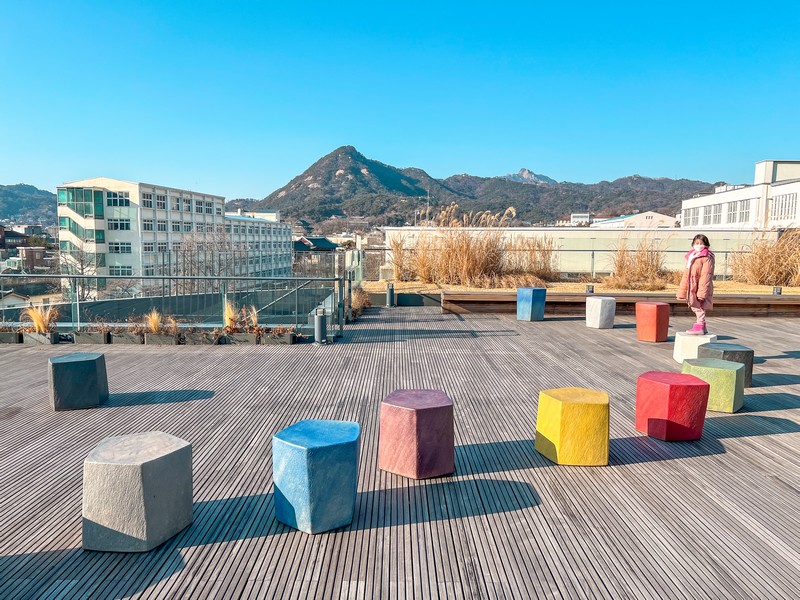

2 Seoul Museum of Craft Art (서울공예박물관)
SeMoCA is the first national museum in Seoul created to showcase Korean crafts. There are seven buildings in the complex and so much to learn about. Learn more about Korean mother of pearl lacquerware, bojagi, or Korean embroidery and folding, and more. There are some beautiful works to see. On top of that, there’s a children’s museum in the complex that is also completely free and has some fantastic experiences for children to learn more about craft culture. Learn in this guide to the Seoul Museum of Craft Art.
- Address: 4 Yulgok-ro 3-gil, Jongno-gu, Seoul (서울시 종로구 율곡로 3길 4)
- By Public Transportation: Go to Anguk Subway Station, and go out of Exit 1 to find the museum just 50 meters away.
- Days: Closed Mondays and January 1st
- Hours: 10:00am ~ 6:00pm
- Website: Seoul Museum of Craft Art
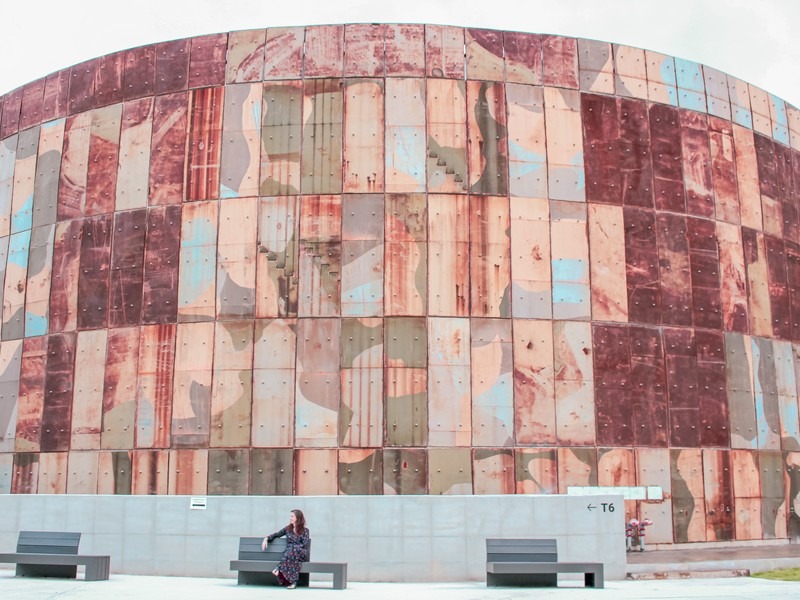
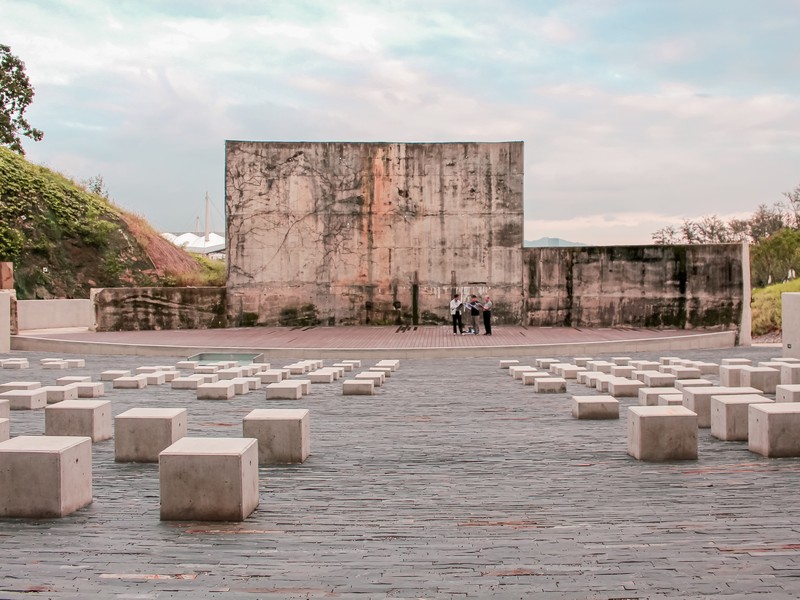
3 Oil Tank Culture Park (문화비축기지)
Five transformed oil tanks are now a cultural and events space. You can enter the reformed oil tanks and find some really cool things inside. The outdoor space is also often host to events. Walk around the entire place and feel free to open doors.
Every time we’ve been, the whole place seems a bit weirdly quiet but the doors are unlocked when it’s working hours. Later in the day, staff will come and lock up but until then, you’ve got the run of the place. Find out more about the Oil Tank Culture Park.
- Address: 661 Seongsan-dong Mapo-gu, Seoul, Korea (서울특별시 마포구 성산동 661)
- Hours: The park is open 24 hours a day but the buildings are open from 10:00am ~ 6:00pm
- Website: Oil Tank Culture Park

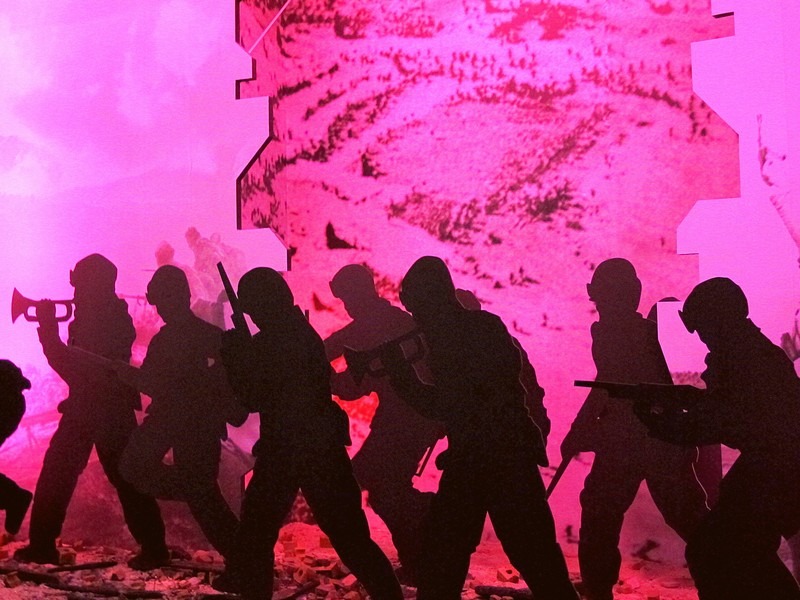
4 War Memorial Of Korea (전쟁기념관)
The War Memorial is massive and and a must visit for anyone that wants to learn more about the history of the country specifically in regards to the war. It’s centrally located in Seoul and there is a ton of information to learn as well as docents that speak multiple languages that can assist you when you go as well. there are more than 13,000 pieces of war memorabilia and military equipment on the grounds of the War Memorial.
- Address: Yongsan-gu Itaewon-ro 29 (서울특별시 용산구 이태원로 29 )
- Hours: 9:30am ~ 6:00pm
- Days: Open every day except Mondays. If Monday is a holiday, the museum will be closed Tuesday.
- Website: War Memorial of Korea
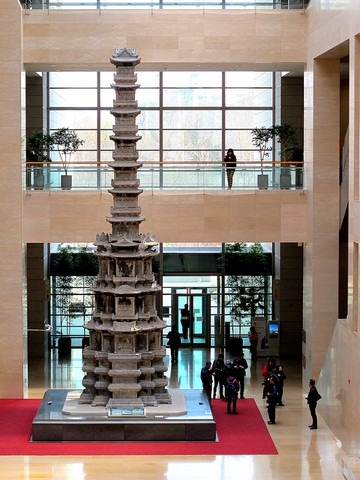

5 National Museum of Korea (국립중앙박물관)
One of our favorite free museums in Seoul to check out again and again, the National Museum of Korea is massive and has 220,000 relics so be prepared to have a really good and long look around. You could really spend days here. We sure have.
The main museum really delves into Korean history and culture and there are some fantastic exhibitions. The museums is also home to a great children’s museum that we’ve visited multiple times as well. Don’t miss this amazing free museum in Seoul.
- Address: 137 Seobinggo-ro Yongsan-gu, Seoul, Korea (서울특별시 용산구 서빙고로 137)
- Hours: Monday, Tuesday, Thursday, Friday: 10:00am ~ 6:00pm; Wednesday, Saturday: 10:00am ~ 9:00pm; Sunday, National Holidays: 10:00am ~ 7:00pm
- Closed: New Year’s Day (January 1), Seollal (Lunar New Year’s Day), Chuseok (Korean Thanksgiving Day) / Permanent Exhibition Hall closed: First Monday of every April and November annually
- Website: National Museum of Korea
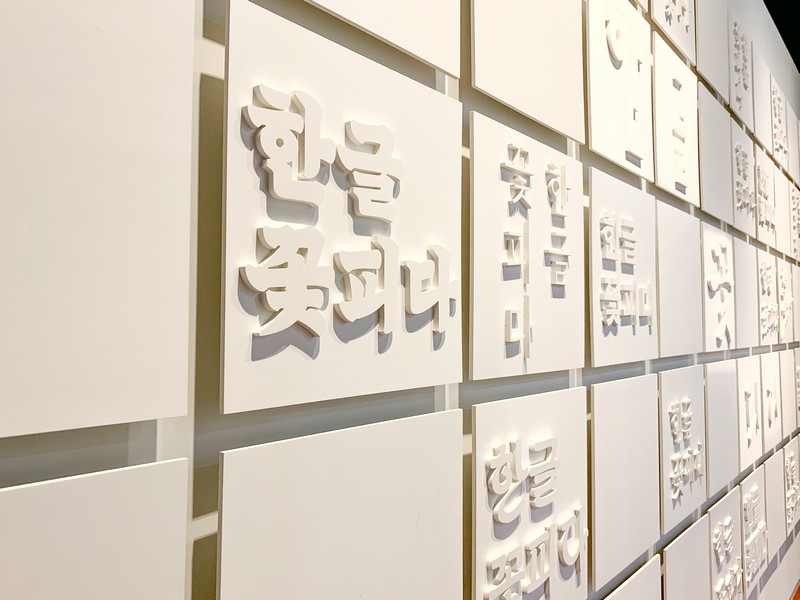
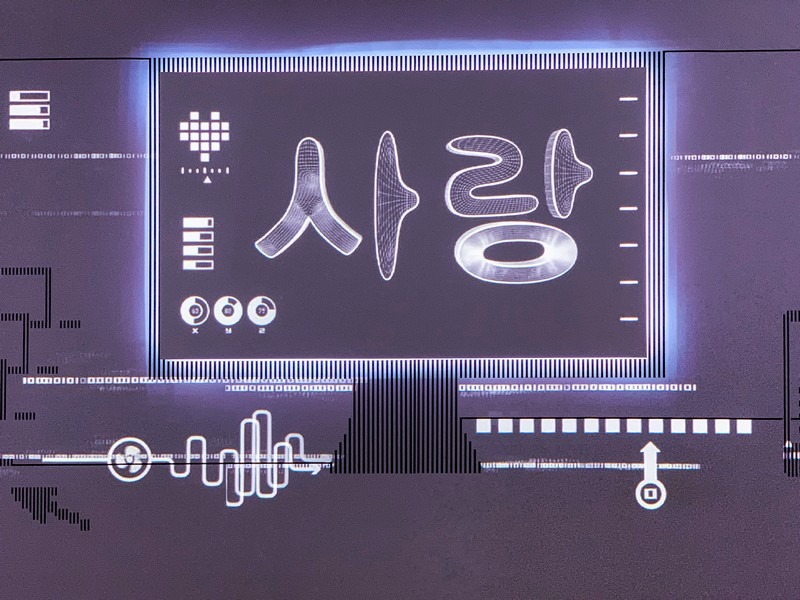
6 National Hangeul Museum (국립한글박물관)
A great museum to check out if you’re interested in learning Hangeul or more about Hangeul, the Korean language system created by King Sejong. Devoted to spreading more information about Hangul and how impressive the system is, this museum is a very interesting spot a lot of tourists overlook.
This museum is on the grounds of the National Museum of Korea so you can visit them at the same time if you like. There’s also a great park around the two museums so you can plan to have a picnic outside after.
- Address: 139 Seobinggo-ro Yongsan-gu, Seoul, Korea (서울특별시 용산구 서빙고로 139)
- Hours: Monday – Friday, Sunday: 10:00am ~ 6:00pm; Saturday: 10:00am ~ 9:00pm
- Days: Closed on January 1, Lunar New Years, Chuseok, and August 15th on the Lunar calendar.
- Website: National Hangeul Museum

7 National Folk Museum of Korea (국립민속박물관)
On the grounds of Gyeongbokgung Palace and easily visited in conjunction with it, the National Folk Museum of Korea showcases 122,500 artifacts that were used in the daily lives of Korean people in the past. There is a traditional culture learning space, exhibition halls and a children’s museum area as well.
- Address: 37 Samcheong-ro, Jongno-gu, Seoul (서울특별시 종로구 삼청로 37)
- Hours: March – May, September – October: 9:00am ~ 6:00pm; June – August: 9:00am ~ 6:30pm; November – February: 9:00am ~ 5:00pm
- Days: Closed New Year’s Day, the day after the Lunar New Year, and Chuseok
- Website: National Folk Museum of Korea
8 Seoul Museum of History (서울역사박물관)
Apart of the Gyeonghuigung Palace site, the Seoul Museum of History focuses on Seoul’s history from the pre-historic era until now with a large focus on the Joseon Dynasty as you would expect. There are free audio guides in multiple languages to make sure you really understand everything you’re viewing. Learn about the history of the city of Seoul through times of war and times of peace and learn about how the kings ruled the country from here.
- Address: 55 Saemunan-ro, Jongno-gu, Seoul (서울특별시 종로구 새문안로 55)
- Hours: 10:00am ~ 6:00pm
- Days: Closed Mondays, January 1st, and other public holidays
- Website: Seoul Museum of History
9 Seoul Baekje Museum (한성백제박물관)
Established in Olympic Park on the pre-historic site of Baekje ruins in Songpa-gu, this museum has an extensive collection of artifacts and relics that is free to the public. You can find gilt bronze caps, replicas of Pungnaptoseong Fortress and Mongchontoseong Fortress and some other great exhibits. If you’re headed to the park for the cosmos in the autumn perhaps, be sure to stop in and see what else you can learn in this great museum.
- Address: 71 Wiryeseong-daero, Songpa-gu, Seoul (서울특별시 송파구 위례성대로 71)
- Hours: Weekdays: 9:00am ~ 7:00pm; Weekends and holidays: 9:00am ~ 9:00pm
- Days: Closed Mondays, New Year’s Day, and public holidays
- Website: Seoul Baekje Museum
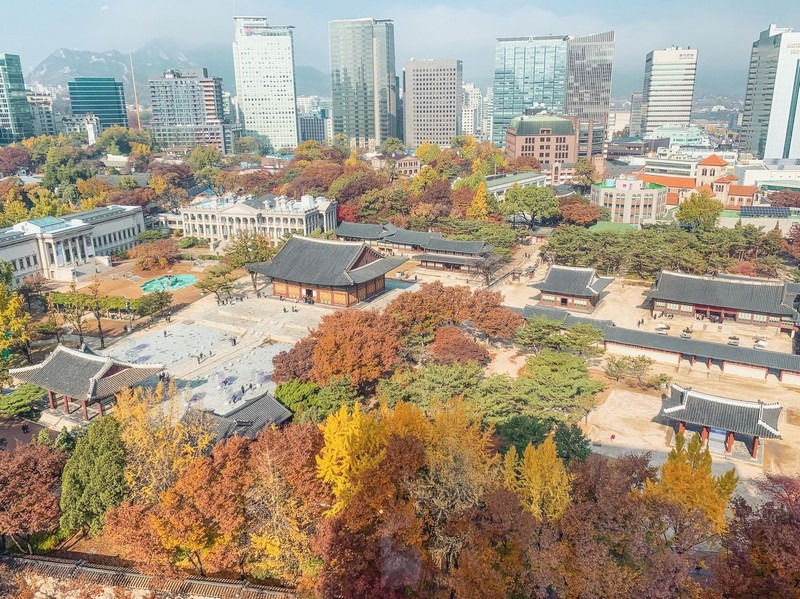
10 Jeongdong Observatory
Most observatories and spots with great views cost a bit of money, but this one is free and you can get an amazing view out over Deoksugung Palace. This is an especially popular spot in the autumn when the foliage is colorful. The building is an office and when you go in, you’ll see a lot of turnstiles for where the workers enter. Just let them know you want to see the observatory and they’ll let you head in to the proper elevator.
- Jeongdong Observatory: 13th floor, 15 Deoksugung-gil, Jung-gu, Seoul (서울특별시 중구 덕수궁길 15 (서소문동) 서울시 서소문청사 1동 13층)
- Cafe Hours: 9:00am ~ 6:00pm
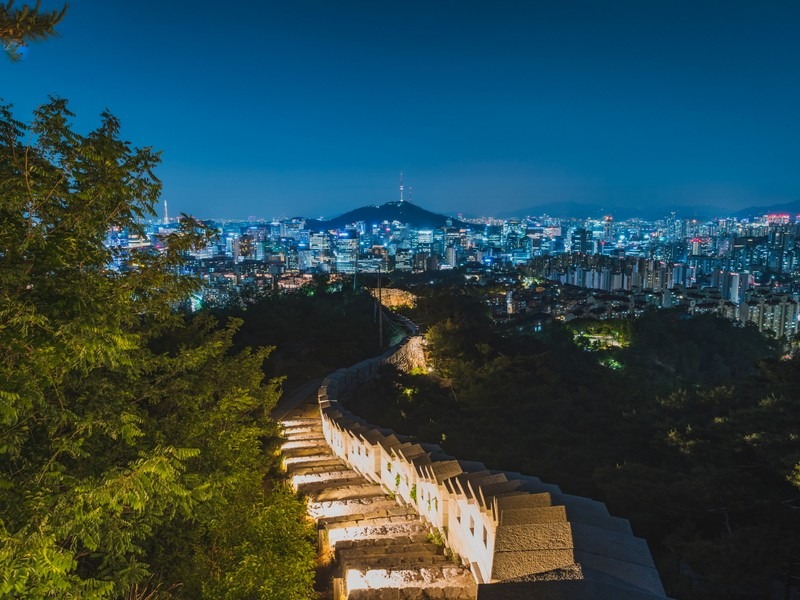
11 Seoul Fortress Wall
The Seoul Fortress Wall is full of history and culture and signboards to tell you all about it. You can see historical gates and more along the wall that is more than 600 years old. I always recommend walking, sometimes hiking, along the Seoul Fortress Wall to new residents to Seoul and tourists especially.
If you’re nervous about getting lost on the mountain trails, do this walk. You can’t get lost just following the wall and the wall circles the central area of Seoul so you can always walk right down to cafes, restaurants, and more. The Seoul Fortress Wall paths are also cleaned off in the winter making it an ideal place to hike in the winter too.

12 Ihwa Mural Village (이화동벽화마을)
Somewhat connected to the above spot, the Ihwa Mural Village sits just inside the Seoul Fortress Wall as well. You could see both at the same time if you want! The Ihwa Mural Village is a fun mountainside village with colorful facades and art to see along the way.
Start at Hyehwa Station and make your way up to the colorful area. Remember that it is a residential area so be respectful of the locals. Learn more about the Ihwa Mural Village before you go.

13 Seoul Walking Tours
If you want to learn more about Seoul whether you want to learn more about the history or just want to see more of different districts, there are 40 free walking tours offered by the Seoul City Government. Go out with a volunteer guide and visit markets, learn about Korean culture, history, and ask questions. The tour and guide are free, but some of the tours do stop in places that require you to pay a small admission fee to get in, so look closely at the options if you want ta completely free tour.
Also, since these are volunteer guides, they can be great or just good depending on the person. I’ve been on a few and one was alright and two were fantastic.
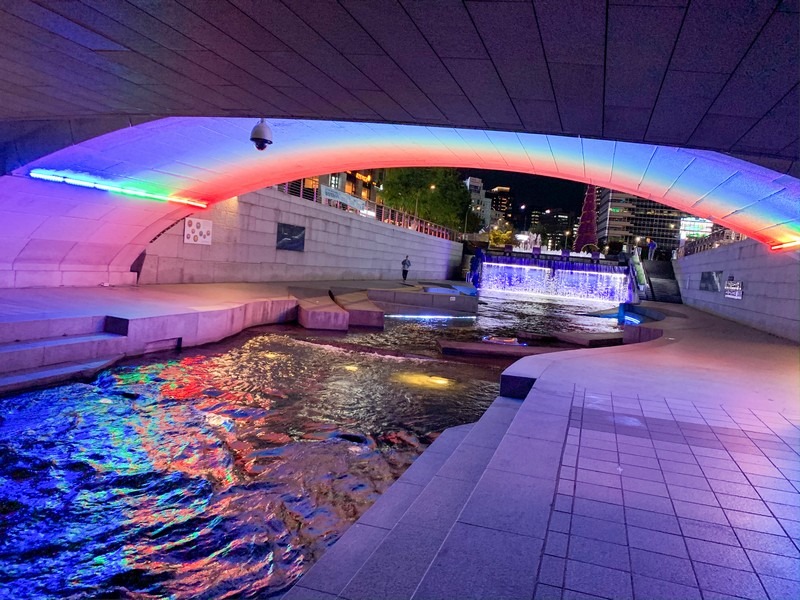
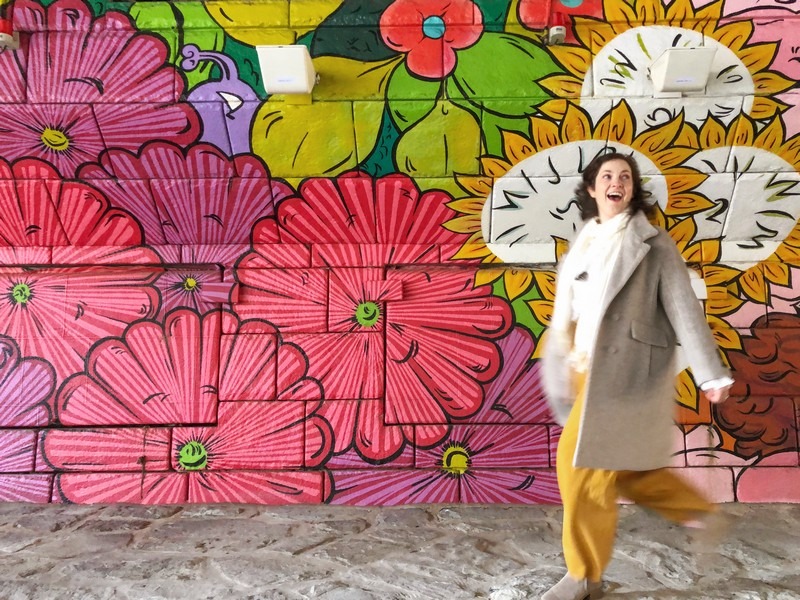
14 Cheonggyecheon Stream (청계천)
The Cheonggyecheon Stream is one of our favorite places to take a walk and you can count on seeing something fun. Home to lantern festivals and exhibitions throughout the year, you can walk along the stream, see what you can see, and stop off in some great spots for lunch like the Gwangjang Market.
We walked along the entire length of the Cheonggyecheon Stream so you know what to expect along the way. Find out more in this guide to the Cheonggyecheon Stream.
Bonus Stop: The Seoul Tourism Plaza (서울관광재단): This tourism hub has a ton of information for tourists regarding the top Seoul tourism attractions but there’s also a souvenir shop and even a Tap Shop! Find out what is so unexpected about the Seoul Tourism Plaza.

15 Seoullo 7017
Right outside of Seoul Station, subway and train, Seoullo 7017 is an awesome place to take a walk, take a seat, watch the people, the lights, the shows, and have fun.
My favorite place to check out is the Malli-dong plaza (pictured above)… which is something almost everyone misses. It’s a hidden gem right outside of Seoul Station. Take your kids, let them jump on the trampolines, smell the flowers, or stay into the evening and see the colorful light shows on the surrounding buildings. Learn more about Seoullo 7017.
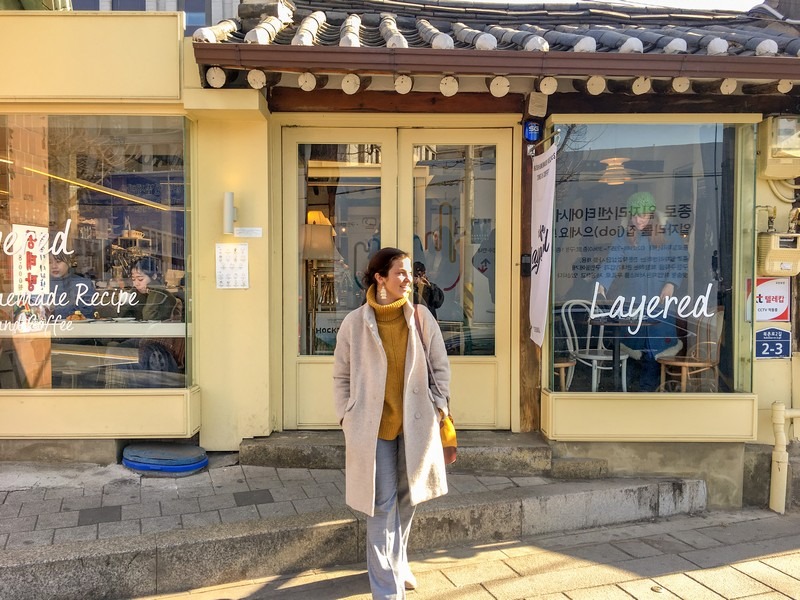
16 Bukchon Hanok Village (북촌한옥마을)
If you want to walk along the traditional Korean buildings in central Seoul, Bukchon Hanok Village is beautiful. There are almost 900 preserved Hanoks, traditional Korean houses, in the area and you could spend hours weaving in and out of the beautiful streets. You can even find a number of Hanoks that are no completely open to the public for free as well.
Start off your time in the area in the Bukchon Culture Center. You can walk through the Hanok and learn more about Hanok architecture and get a free map for the area as well. The map will point out the must-see alleys and best spots to take a photo of the surrounding area. Find out more about what I recommend doing in the Bukchon Hanok Village if you do want to spend a bit of money on tea houses and Hanbok rental.
- Bukchon Culture Center
- Address: 37 Gyedong-gil, Jongno-gu, Seoul
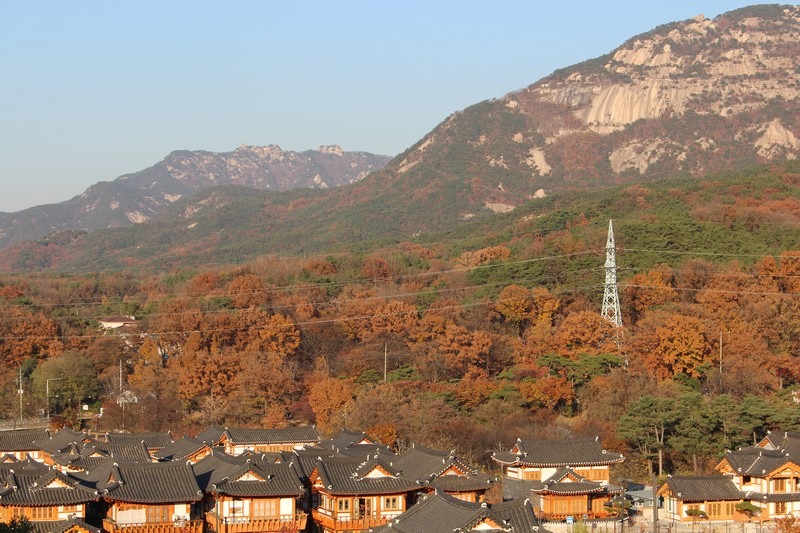
17 Eunpyeong Hanok Village (은평한옥마을)
The “other” Hanok village in the city but the quieter hidden gem version. The Eunpyeong Hanok Village was built over the last decade to be for tourists. The Bukchon Hanok Village still has residents who get in the news for complaining from time to time about all of the tourists, but you won’t find that here.
The alleyways are beautiful and often quite empty here and you can easily take a stroll into the nearby Bukhansan Mountainside and visit a Korean temple on the same trip. Found out more about the Eunpyeong Hanok Village.
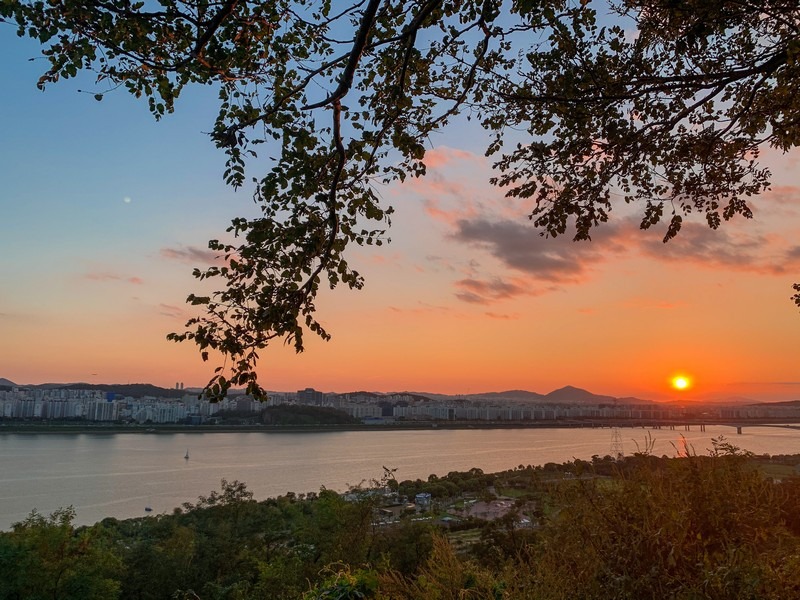
18 Han River Parks (한강공원)
The Han River is a must-visit when you’re in Seoul. You can take long beautiful walks, see shows, and just chill out a bit from the hustle and bustle in the city. There are 11 Han River parks to choose from when you want to go. In the summers there are free water pads to get wet in or let the kids splash in and concerts and festivals you can listen to for free as well.
The parks are all so different as well offering a variety of things to see and do for free so check out that guide to the 11 Han River parks linked above. There is sure to be an area that suits you.

19 Rainbow Lights at Banpo Bridge (반포대교 무지개 분수)
If you head to the Banpo Bridge, you can chill out and also see the world’s longest bridge fountain. There are 380 jets that shoot out water and colorful lights make it look like a gushing rainbow at night. Be prepared for crowds. This light and water show does get popular.
The Moonlight Rainbow Fountain operates daily from April to October and there are multiple performances a day with each performance lasting almost 20 minutes. Learn more about how to get there and what to expect in this guide to the Banpo Bridge Moonlight Rainbow Show.
The schedule for the rainbow and water show at Banpo Bridge:
- April 1 – June 30, September 1 – October 31: Weekdays: 12:00pm; 8:00pm; 8:30pm; 9:00pm; Weekends: 12:00pm; 7:30pm; 8:00pm: 8:30pm; 9:00pm
- July 1 – August 31: Weekdays: 12:00pm; then every half hour from 7:30pm to 9:30pm; Weekends: 12:00pm; every half from 7:30pm to 10:00pm

20 All of the Korean Buddhist Temples
Something I thought was obvious, but I’ve realized when traveling the world, isn’t always and requires a mention, the Buddhist temples in Korea are open to visitors and there are some just beautiful ones to see in Seoul. Of course always be respectful, wear appropriate clothing for a religious site, and only visit during daylight hours as these are working temples with monks.
In Korea, you can also stay at a temple if you do want to spend a bit of money and get a full experience. If not, you can still visit, learn more about Korean Buddhism, and learn about the culture through the beautiful paintings and temple decoration.
Some temples in Seoul I recommend:

21 Dongdaemun Design Plaza (동대문디자인플라자 (DDP))
Host to major events in Seoul like fashion shows and more, the DDP is actually open and free for you to walk around and in except for the exhibition spaces if they’re hosting and event. You can learn more about everything you can do at the Dongdaemun Design plaza here.
- Address: 281 Eulji-ro, Jung-gu, Seoul (서울특별시 중구 을지로 281 (을지로7가))
- Hours: You can walk around and through the exterior of the building 24 hours a day, but should you want to go inside here are the hours.
- Museum: Tuesday – Sunday: 10:00am ~ 7:00pm
- Design Shop: Weekdays: 10:00am ~ 9:00pm; Weekends & Holidays: 10:00am ~ 10:00pm

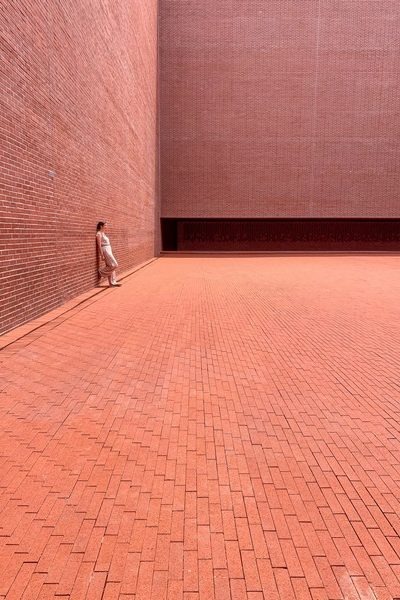
22 Seosomun Shrine History Museum (서소문성지역사박물관)
Regarded as a sacred place for Korean Catholics, the Seosomun Shrine History Museum is a very interesting museum and architectural find in Seoul. The path in the museum takes you around and down to a variety of unique spaces and museum halls before spitting you back out again. Learn more about the Seosomun Shrine History Museum and some other great architectural spaces in Seoul here.
- Address: 5 Chilpae-ro, Jung-gu, Seoul (서울특별시 중구 칠패로 5 (의주로2가))
- Hours: Tuesday, Thursday – Sunday: 9:30am ~ 5:30pm; Wednesday: 9:30am ~ 8:30pm
- Days: Closed Mondays
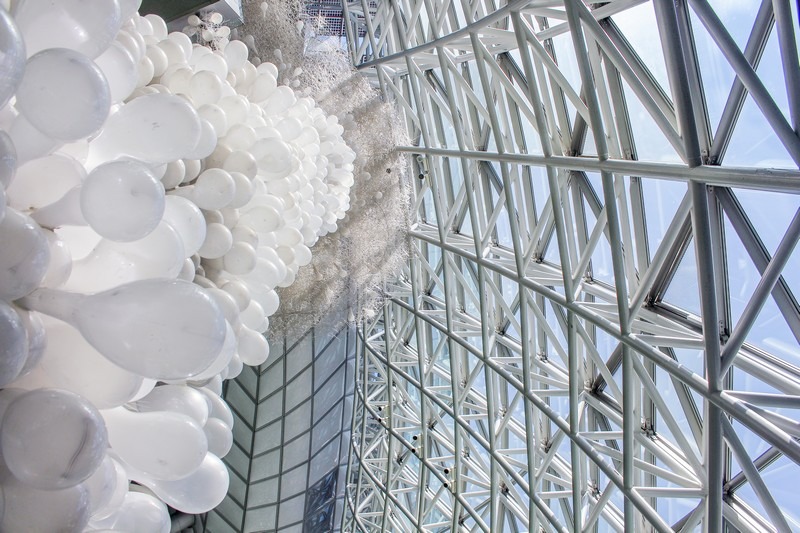
23 Seoul City Hall (서울특별시청)
This might sound like an odd one, but hear me out. The Seoul City Hall just across the street from Deoksugung Palace is really eye catching. A ton of people stop on the lawn in front of this large glass ‘wave’ like structure and don’t even realize they can go inside and should!
Designed by Yoo Kerl of iArc, this building is climate responsive and angled to maximize the amount of diffused light. 62% of the building is for government offices but 38% of the building was kept for public use.
Inside, you can see the an enormous living wall which holds the Guinness World Record for being the largest vertical garden in the world as well as the “Meta Epic: SeoBeol” a beautiful artwork that looks like balloons and a tornado. From there, make your way up or down to find the other spaces for public use.
- Address: 110 Sejongdae-ro Jung-gu, Seoul (서울특별시 중구 세종대로 110 서울특별시청)
- Hours: Every day 9:00am ~ 6:00pm; Saturdays: 9:00am ~ 3:00pm
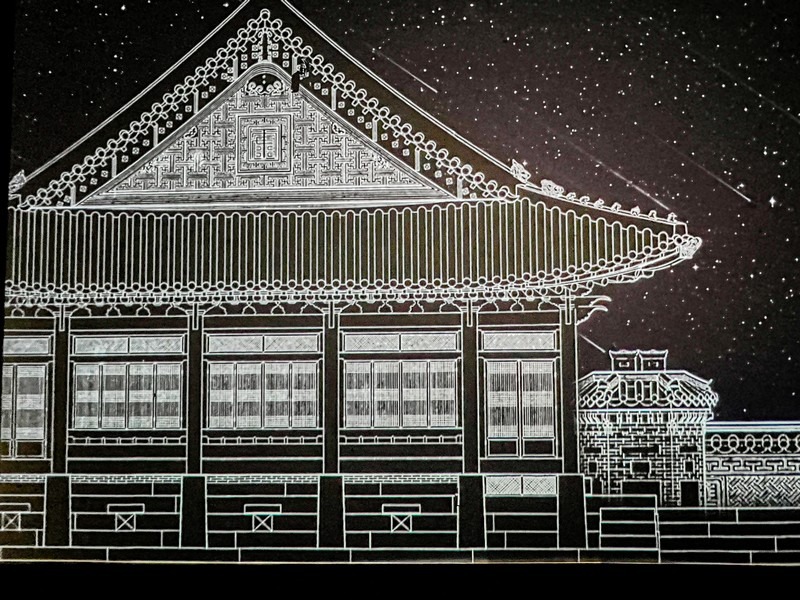
24 National Palace Museum of Korea (국립고궁박물관)
A museum also on the grounds of Gyeongbokgung Palace which never gets listed even though the National Folk Museum is always listed, the National Palace Museum of Korea is also completely free to enter and even connected to the subway station so really easy to find.
Just go out of Gyeongbokgung Station exit 5 and you’re there. There are some great pieces held here and exhibitions. Also, definitely go down to the basement level where there are some cool experiences. We did one and got free Hanji notebooks the last time we visited.
- Address: 12 Hyojaro, Jongno-gu, Seoul (서울 종로구 효자로 12)
- Hours: Every day: 10:00am ~ 6:00pm
- Days: Closed January 1st, February 1st, September 10th
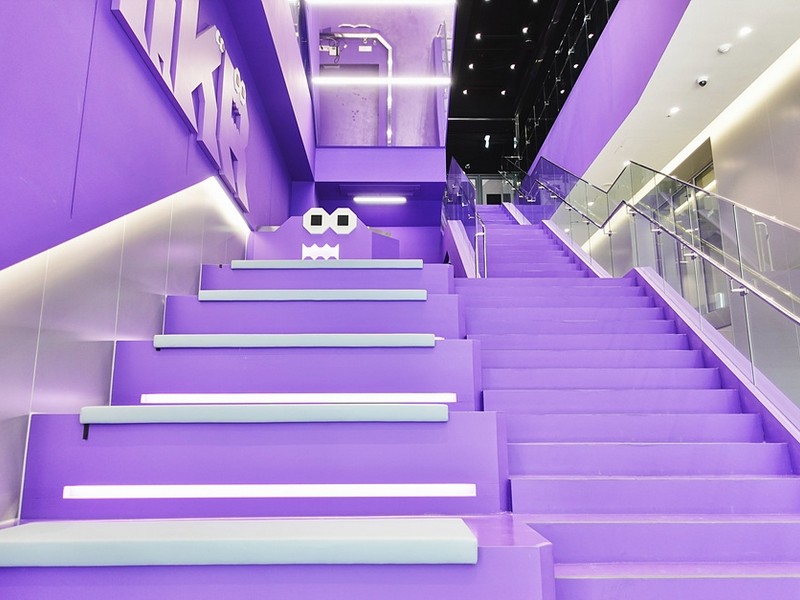
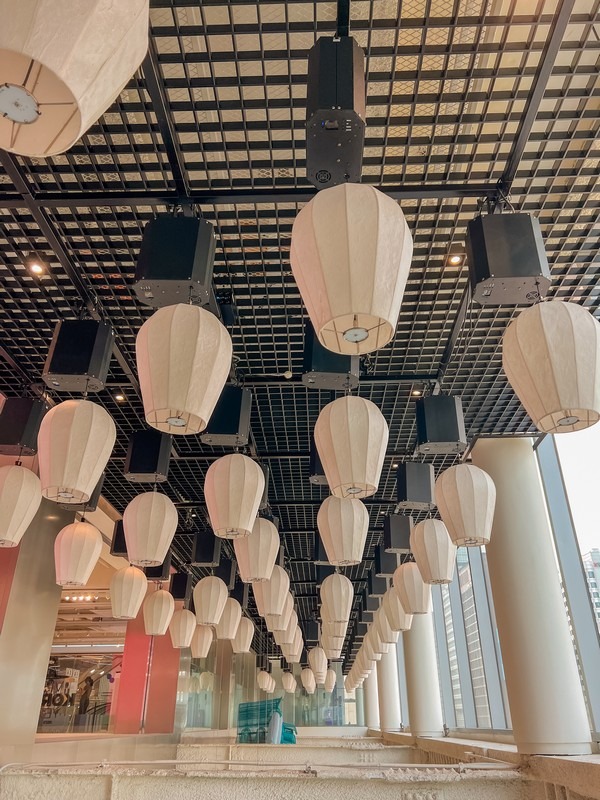
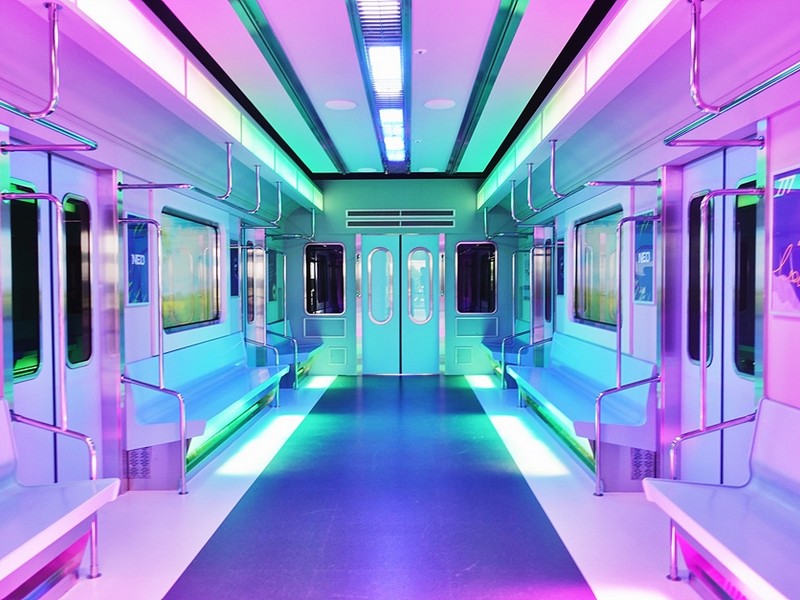
25 HiKR Ground (하이커 그라운드)
The ultimate Hallyu playground. HiKR Ground is an immersive tourism space opened by the Korea Tourism Organization and brings together floors of fun. Create your own K-Pop video in the with a BTS or AESPA background. Learn more about Korean wellness tourism and find out what the best Korean tea is for you. It’s a great space that’s completely free!
- Address: 40 Cheonggyecheon-ro, Jung-gu, Seoul (서울특별시 중구 청계천로 40 한국관광공사 서울센터)
- Hours: 1F, 5F: 09:00-20:00; 2F – 4F: Tuesday – Sunday 10:00-19:00 (Last admission 20 minutes before closing)
- Website: hikr.visitkorea.or.kr

26 The Story of King Sejong (세종이야기)
While a lot of people visit Gwanghwamun Square, a lot of people completely miss the fact that there is a free museum beneath that tells the story of both King Sejong and Admiral Yi Sun-sin. It’s not only educational and will amp up any visit to downtown Seoul, but in the winter or summer, it’s a great break from the weather and there are bathrooms there too.
- Address: 175 Sejong-daero, Jongno-gu, Seoul (서울특별시 종로구 세종대로 지하 175)
- Wondering how to get inside? There’s a door on the backside of the very popular King Sejong statue that everyone takes photos of.
- Hours: Tuesday – Sunday: 10:00am ~ 6:30pm
Did you like this post? Pin IT!
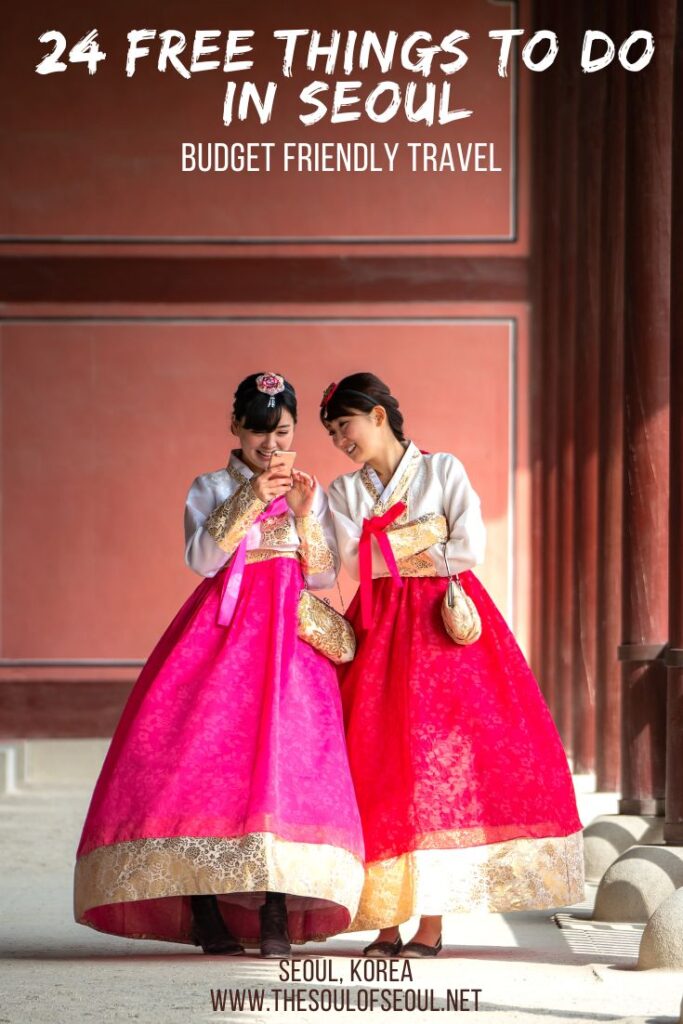
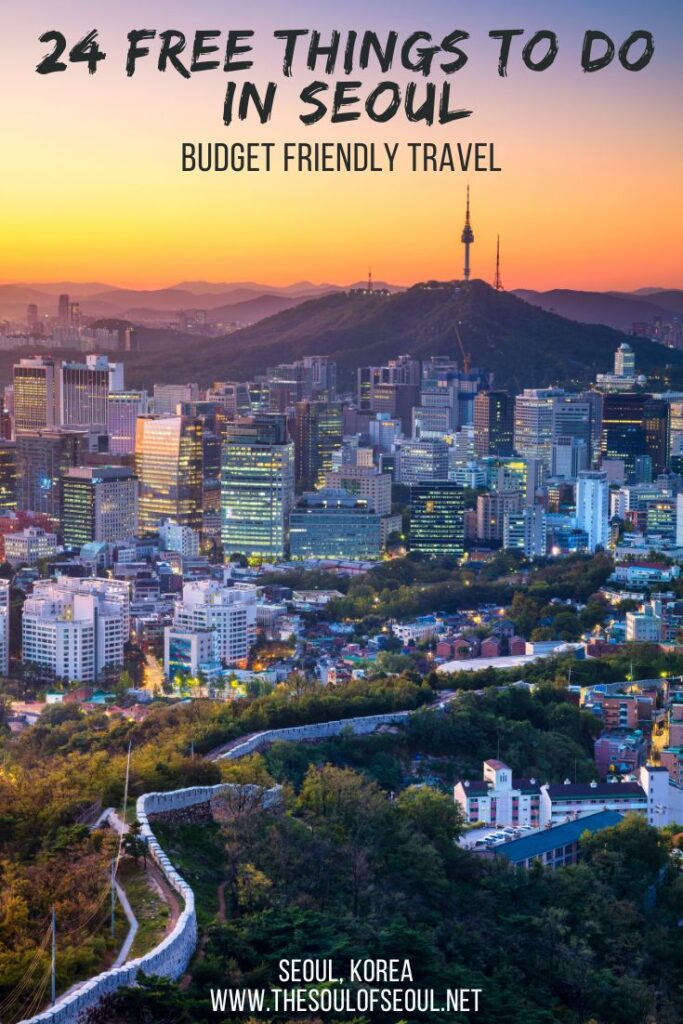


One Comment
Judy Mates
Thank you for this very informative posting!